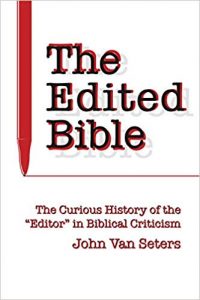GRABBE, L. L. (ed.) Good Kings and Bad Kings: The Kingdom of Judah in the Seventh Century BCE. London: Bloomsbury T&T Clark, 2005, 384 p. – ISBN 9780567082725.
According to the Bible, among the last kings of the kingdom of Judah was one of the most notorious kings-Manasseh-and one of the most righteous-Josiah. Are the accounts of their contrasting reigns anything more than the ideological creations of pious writers and editors? Does this juxtaposition of a ‘good king’ and a ‘bad king’  provide good historical information or only theological wishful thinking? In this volume the on-going discussions in the European Seminar on Methodology in Israel’s History have tackled the history of Judah in the seventh century BCE, with a focus on the reign of Josiah. Some essays survey the history and archaeology of Judah from Sennacherib to Nebuchadnezzar. Several examine the reign of Manasseh and address the question of whether it is ripe for re-evaluation. Others ask what we know of the reign of Josiah and, especially, what form his famous cult reform took or even whether it was historical. As always, the editor gives an introduction to the topic, with summaries of the contributions, plus a concluding summary of and personal perspective on the discussion. Contributors include such internationally known scholars as Rainer Albertz, Philip Davies, Axel Knauf, Nadav Na’aman, Marvin Sweeney, and Christoph Uehlinger
provide good historical information or only theological wishful thinking? In this volume the on-going discussions in the European Seminar on Methodology in Israel’s History have tackled the history of Judah in the seventh century BCE, with a focus on the reign of Josiah. Some essays survey the history and archaeology of Judah from Sennacherib to Nebuchadnezzar. Several examine the reign of Manasseh and address the question of whether it is ripe for re-evaluation. Others ask what we know of the reign of Josiah and, especially, what form his famous cult reform took or even whether it was historical. As always, the editor gives an introduction to the topic, with summaries of the contributions, plus a concluding summary of and personal perspective on the discussion. Contributors include such internationally known scholars as Rainer Albertz, Philip Davies, Axel Knauf, Nadav Na’aman, Marvin Sweeney, and Christoph Uehlinger
Reviews
“”Each scholar, across the spectrum of currrent thought about Israel’s history … does a superb job of rendering explicit the assumptions and methodological procedures with which he approaches the welter of material which must be considered when writing about this time in Judah’s history … the entire volume is strong” Expository Times” –
“Individual Reviews by Lester E. Grabbe and Francesca Stavrakopoulou in the International Review of Biblical Studies” – Intl. Review of Biblical Studies
“”The collection of essays provides a good overview of positions in the current debate on the usefulness (or lack thereof) of biblical and archaeological sources for the reconstruction of the history of seventh-century Judah.” 32.5 (2008)” – J.L.W. Schaper, Journal for the Study of the Old Testament
“”Each of the articles presented here is well written, scholarly, and thought provoking” John Engle, RBL 04/2006,” – John Engle, RBL
“”This volume is of keen interest not only for commentators on the book of Deuteronomy but also for those working on a literary history of the Pentateuch or a history of the Yahweh religion…Grabbe presents a very helpful volume that delivers a kind of candid shot of the debate on the history of seventh century B.C.E…. This volume contributes a good deal to this methodology.”” – Eckart Otto, RBL
Este é mais um livro que preciso analisar com tempo. É resultado das discussões do grupo que constitui o Seminário Europeu de Metodologia Histórica.

